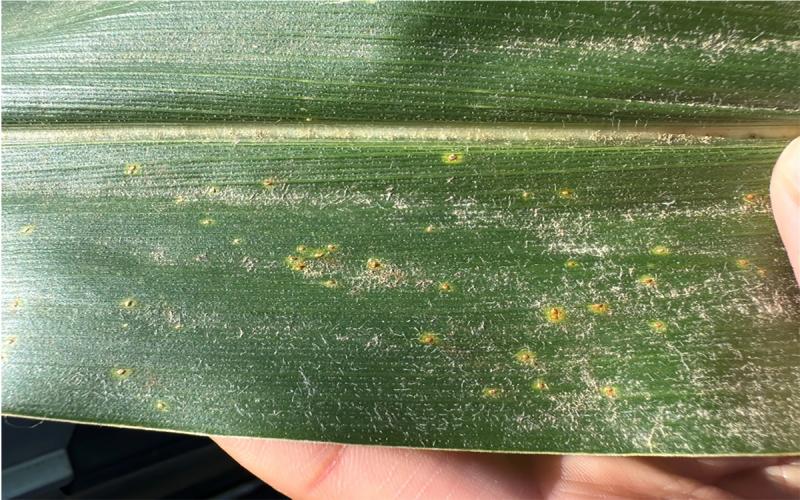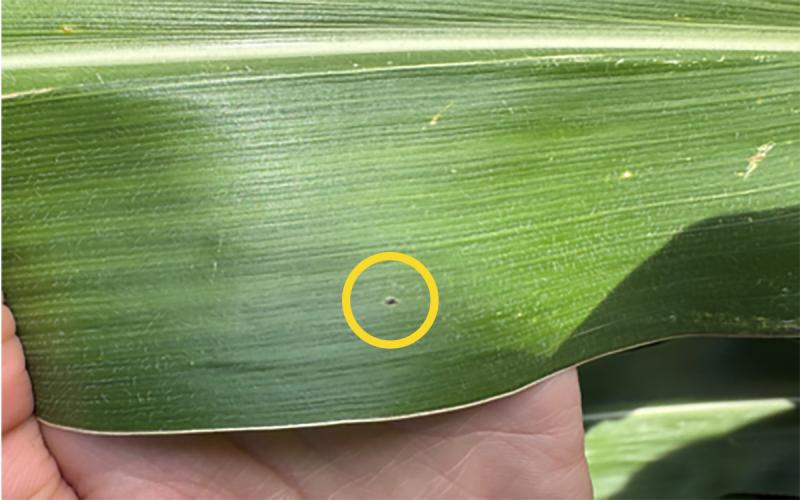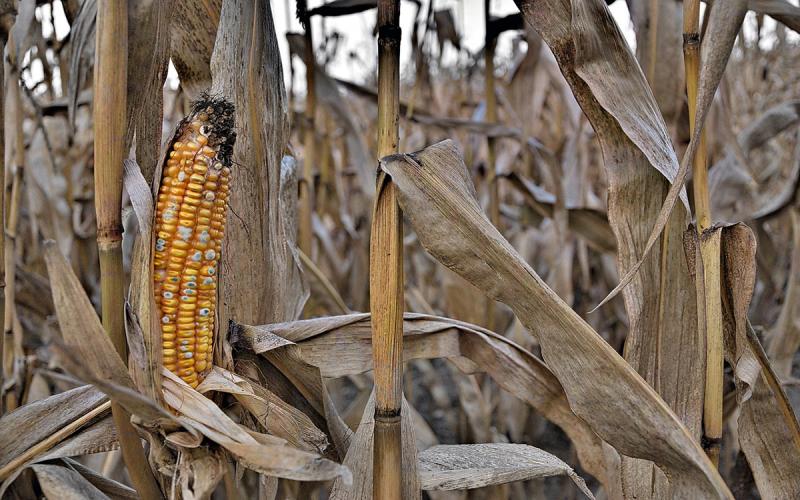Southern Rust
We are beginning to see moderate amounts of Southern Rust in many fields across South Dakota (Figure 1). Several fields observed are beginning to reach fungicide spray thresholds (20-30% infection). We recommend that producers consider fungicide application in corn if they are observing southern rust in the top of the canopy to reduce yield loss due to this disease. For a recommendation about growth stage and fungicide application, please visit the Crop Protection Network website. If you need fungicide options that will help manage southern rust in South Dakota, consult the most-recent South Dakota Pest Management Guide: Corn produced by SDSU Extension. It is important to note that we are also observing high amounts of common corn rust, which is not associated with yield loss in corn. Please ensure that rust has been identified correctly before investing in a fungicide application.

Counties Positive for Southern Rust
- Bon Homme
- Brookings
- Clay
- Deuel (suspect*)
- Grant
- Lake
- McCook
- Minnehaha
- Moody
- Roberts
- Turner
- Union
- Yankton
*Denotes unconfirmed yet credible reports of disease
Tar Spot
The first confirmed report of Tar Spot in South Dakota was 7/25/2025. Since then, we have had several reports of the disease in the SE part of the state with varying severity from 1% to 25%. Most fields that have had reports of this disease so far have not needed a fungicide to manage the disease as the infection load was very low. Figure 2 is an example of lesions that are observed on leaves in many fields. We recommend that producers continue scouting fields on a weekly basis until corn reaches the R3 (milk) growth stage. At that point, most of the yield is set for corn and chemical control is not needed or effective.

Counties Positive for Tar Spot
- Bon Homme
- Clay
- Deuel
- Grant
- Lincoln (suspect*)
- Minnehaha
- Turner (suspect*)
- Union
- Yankton
*Denotes unconfirmed yet credible reports of disease


